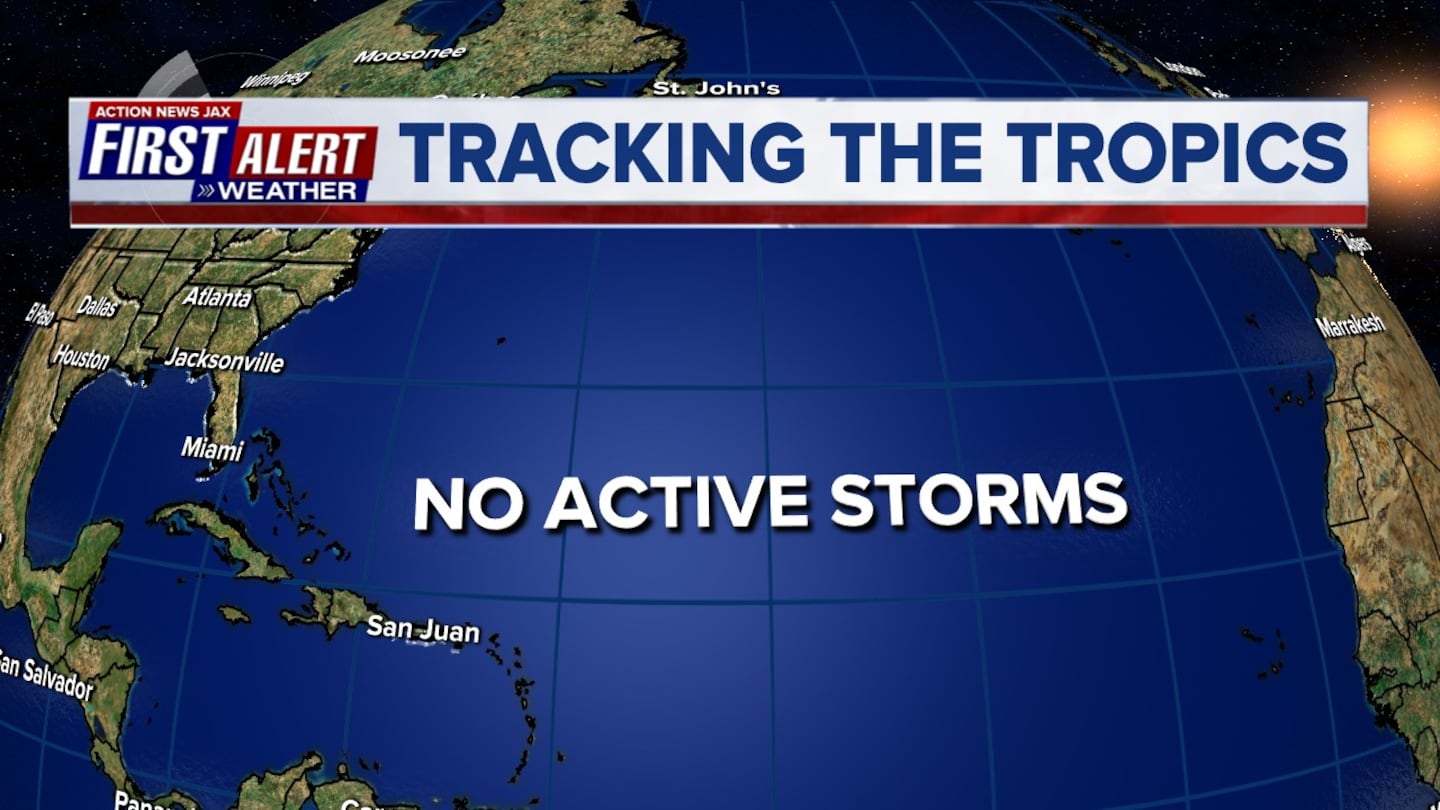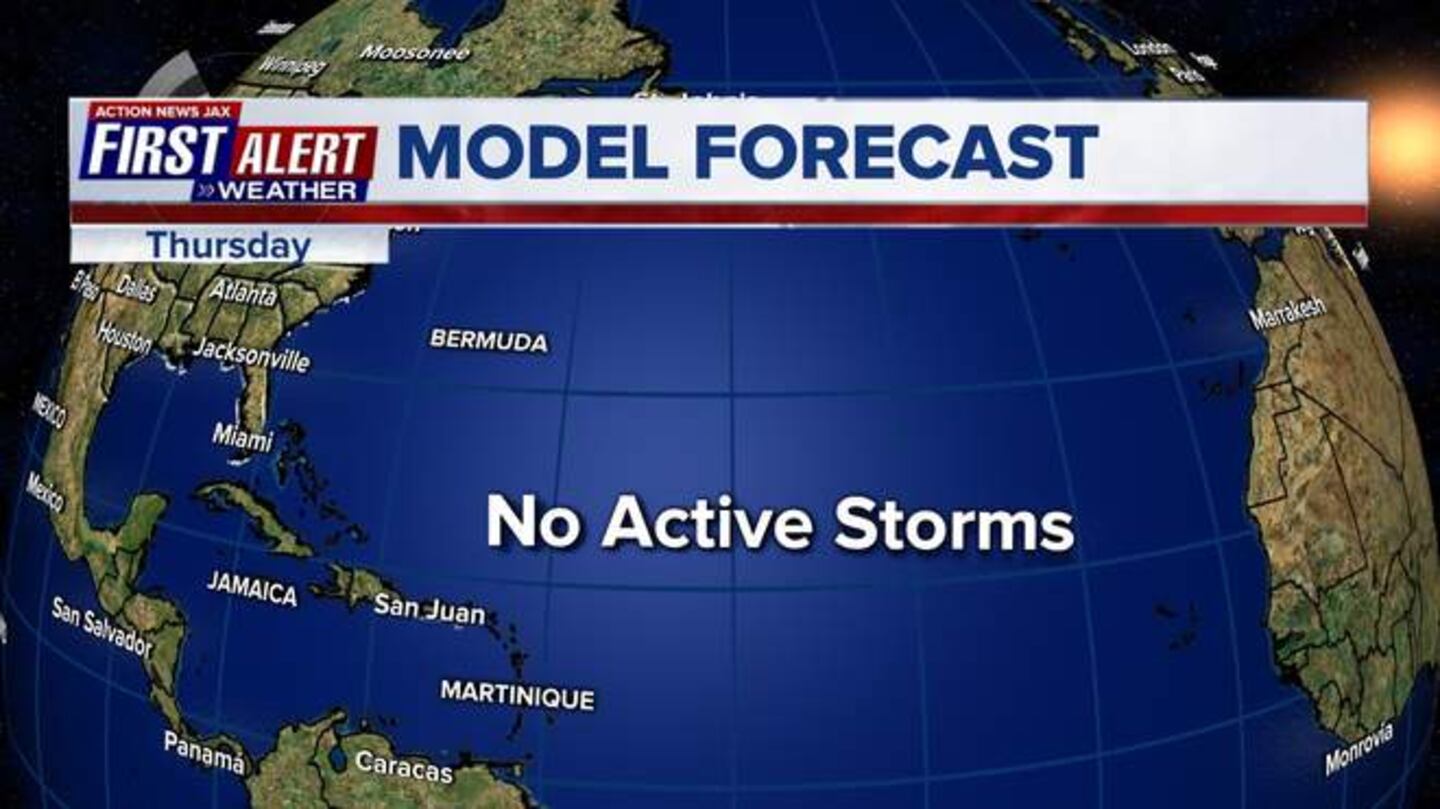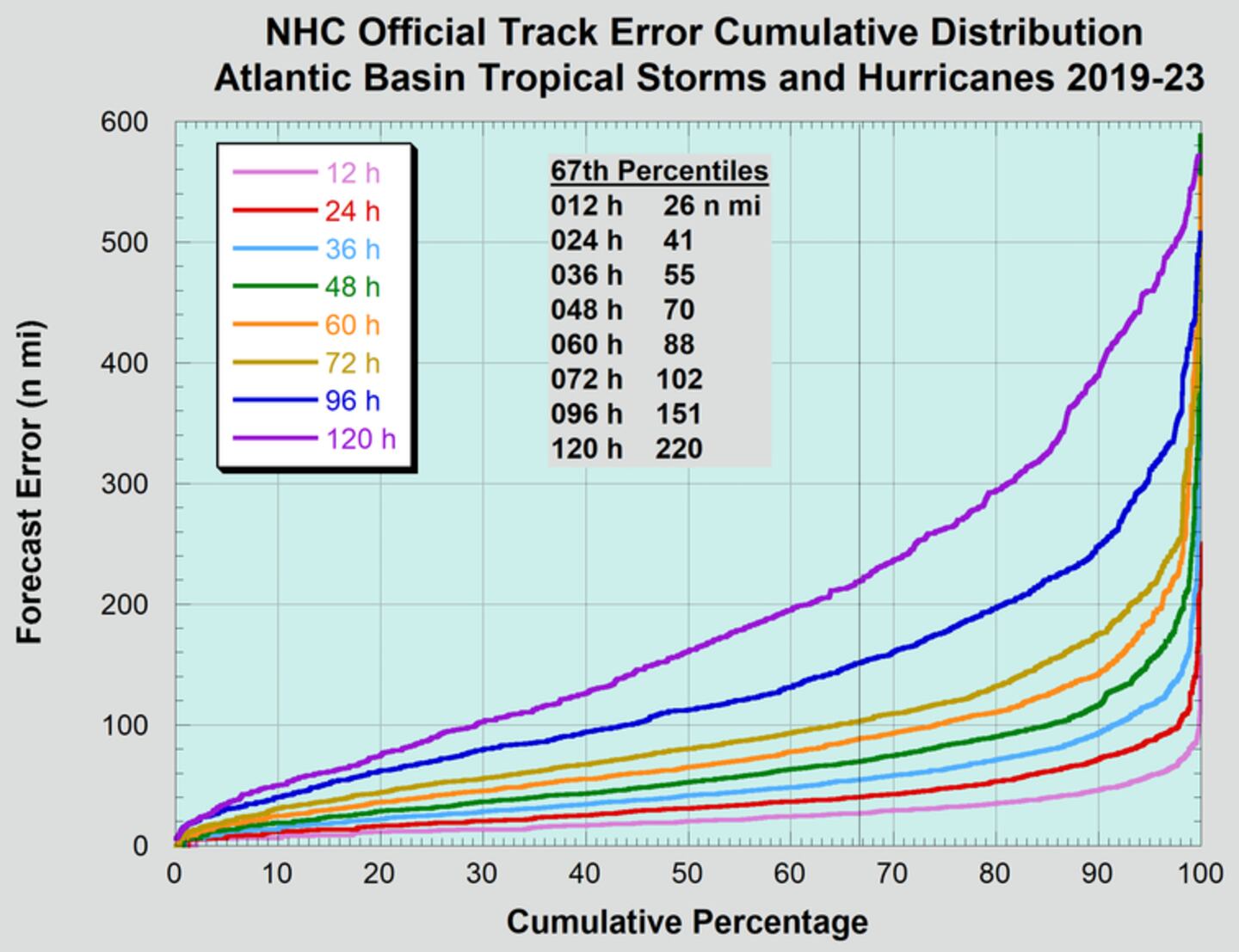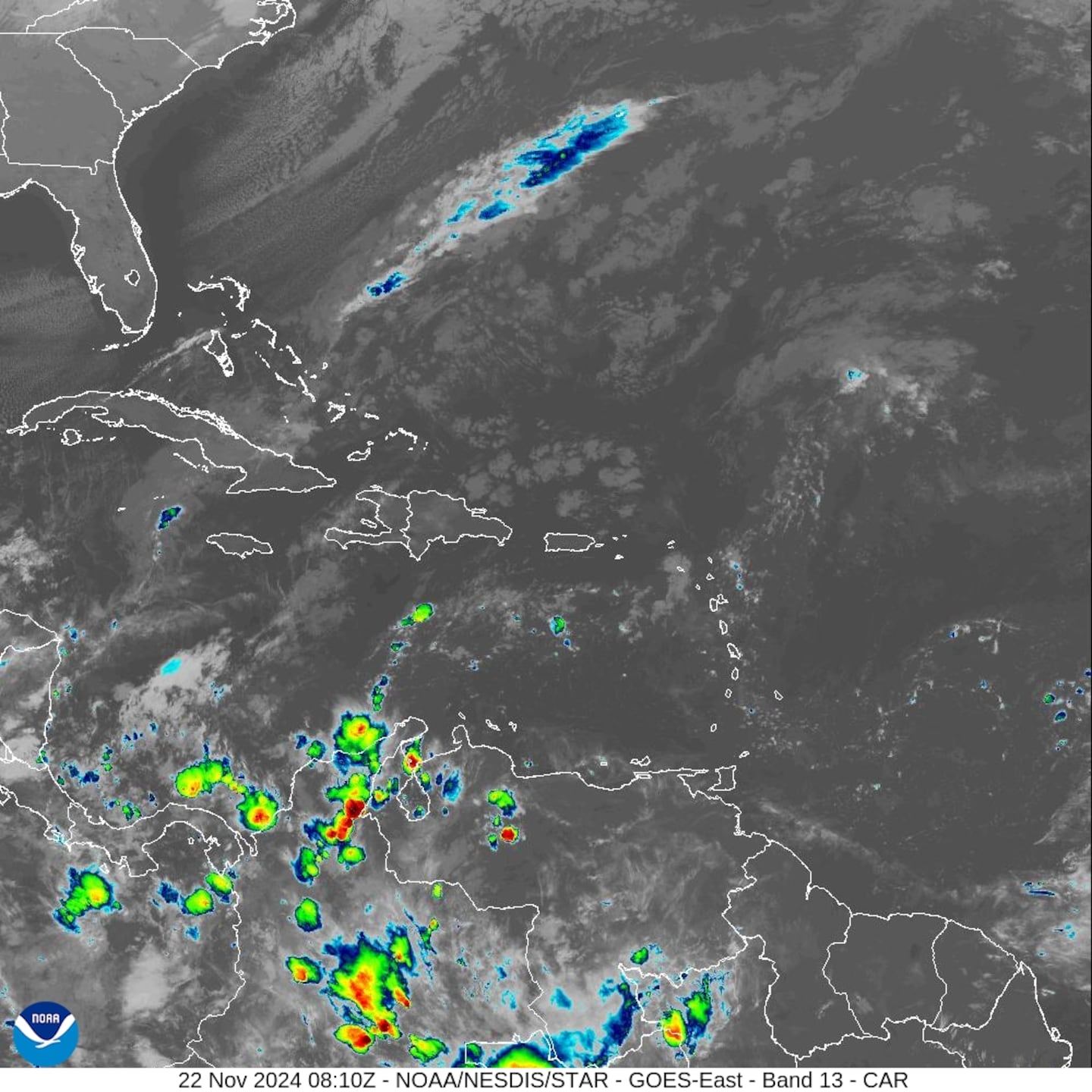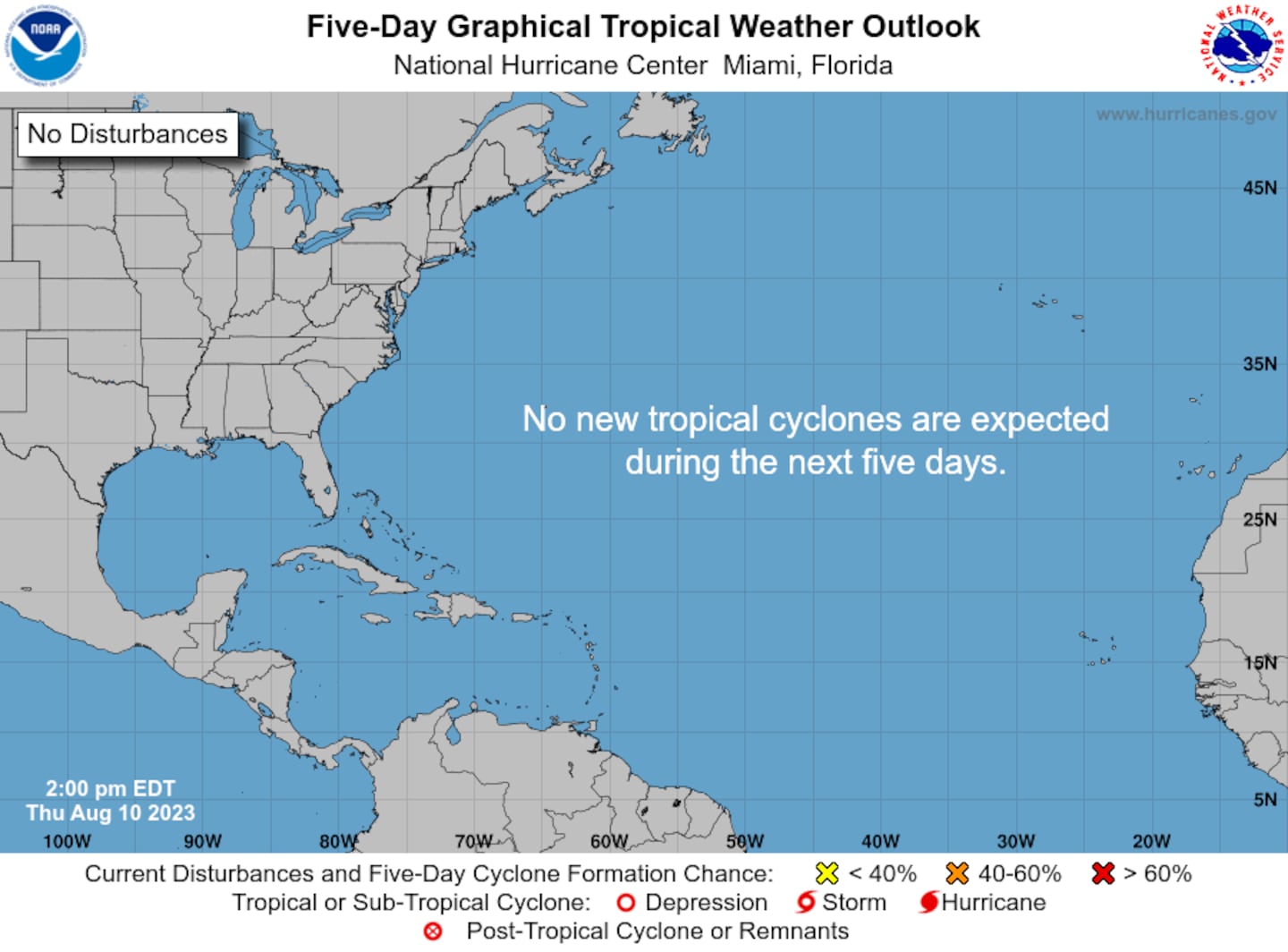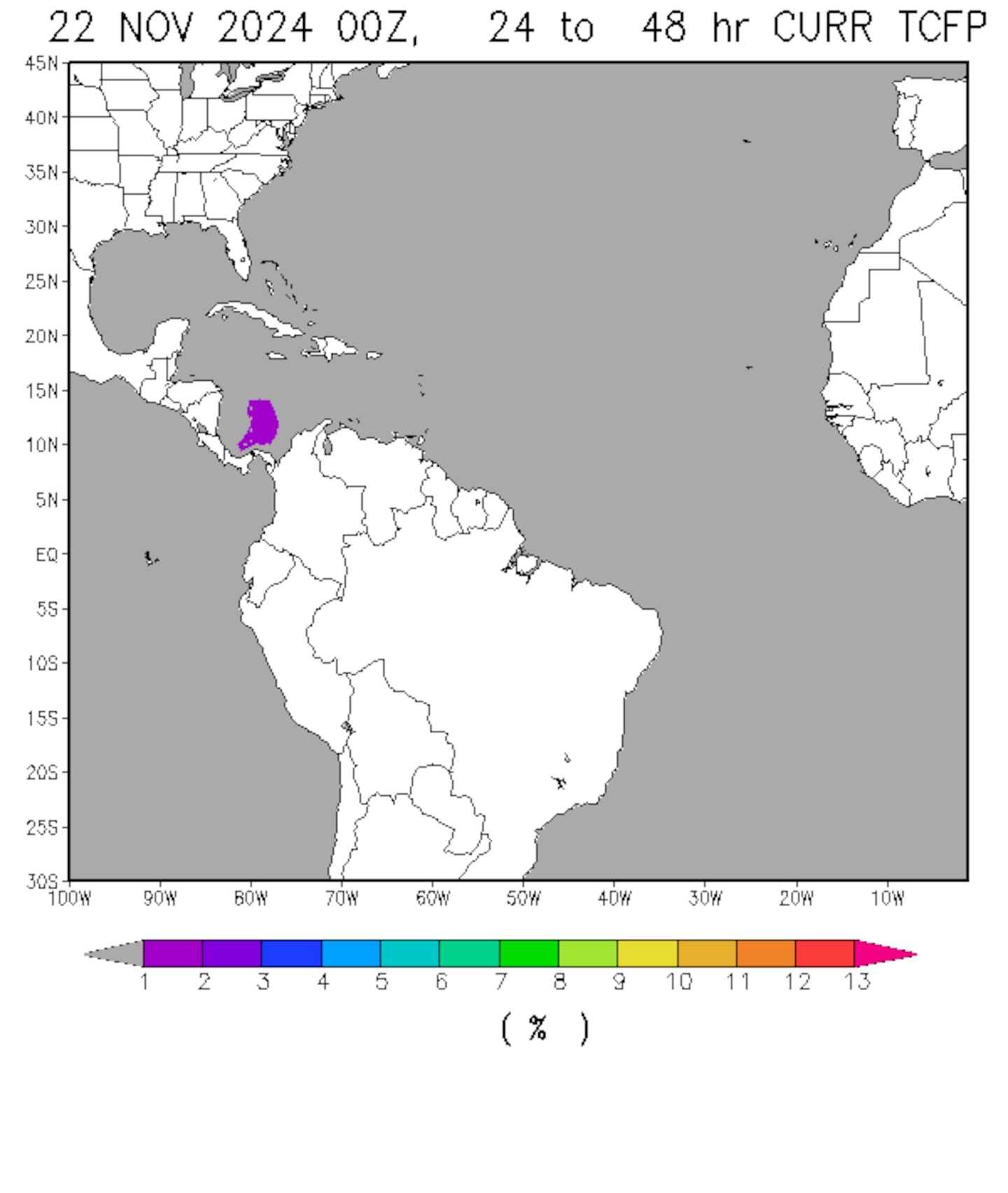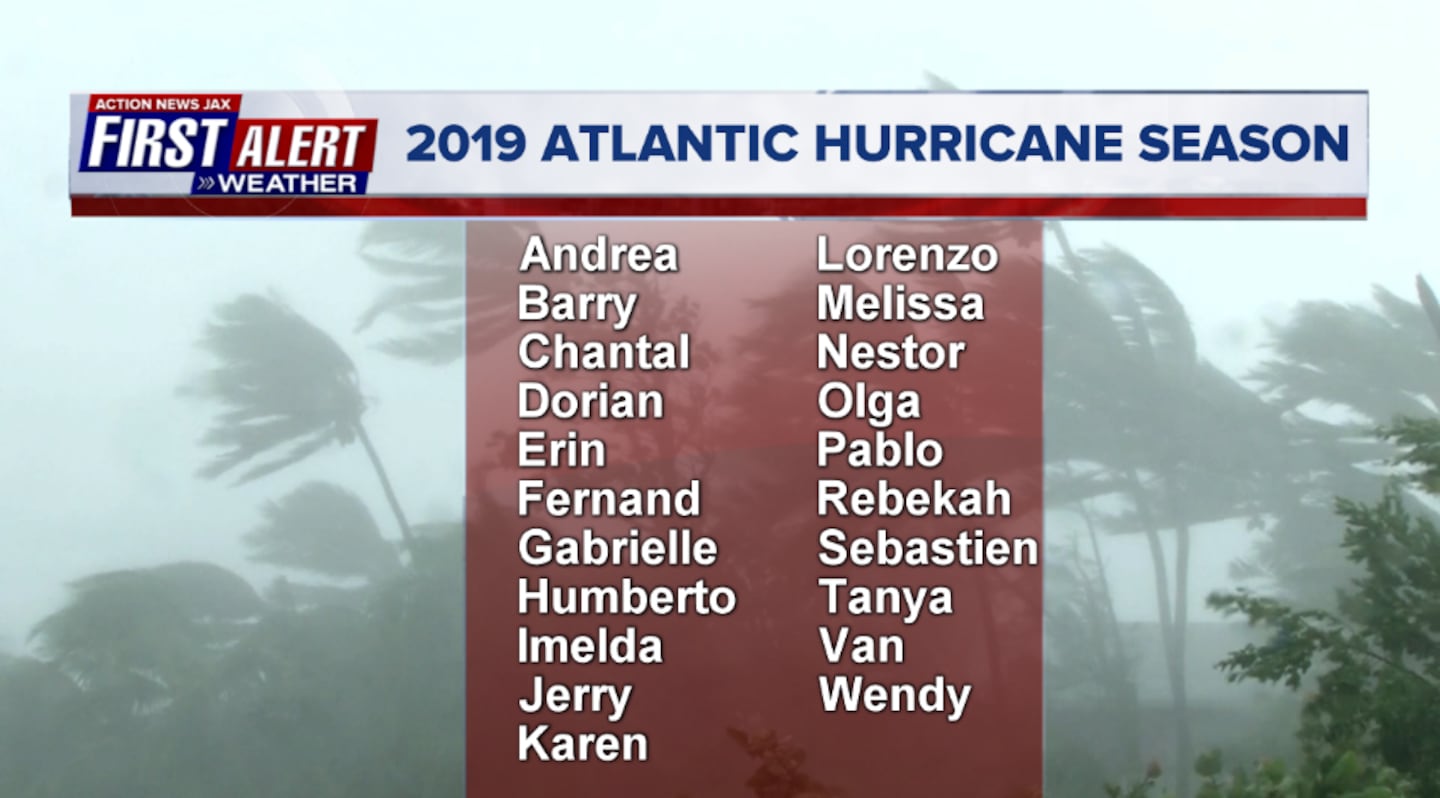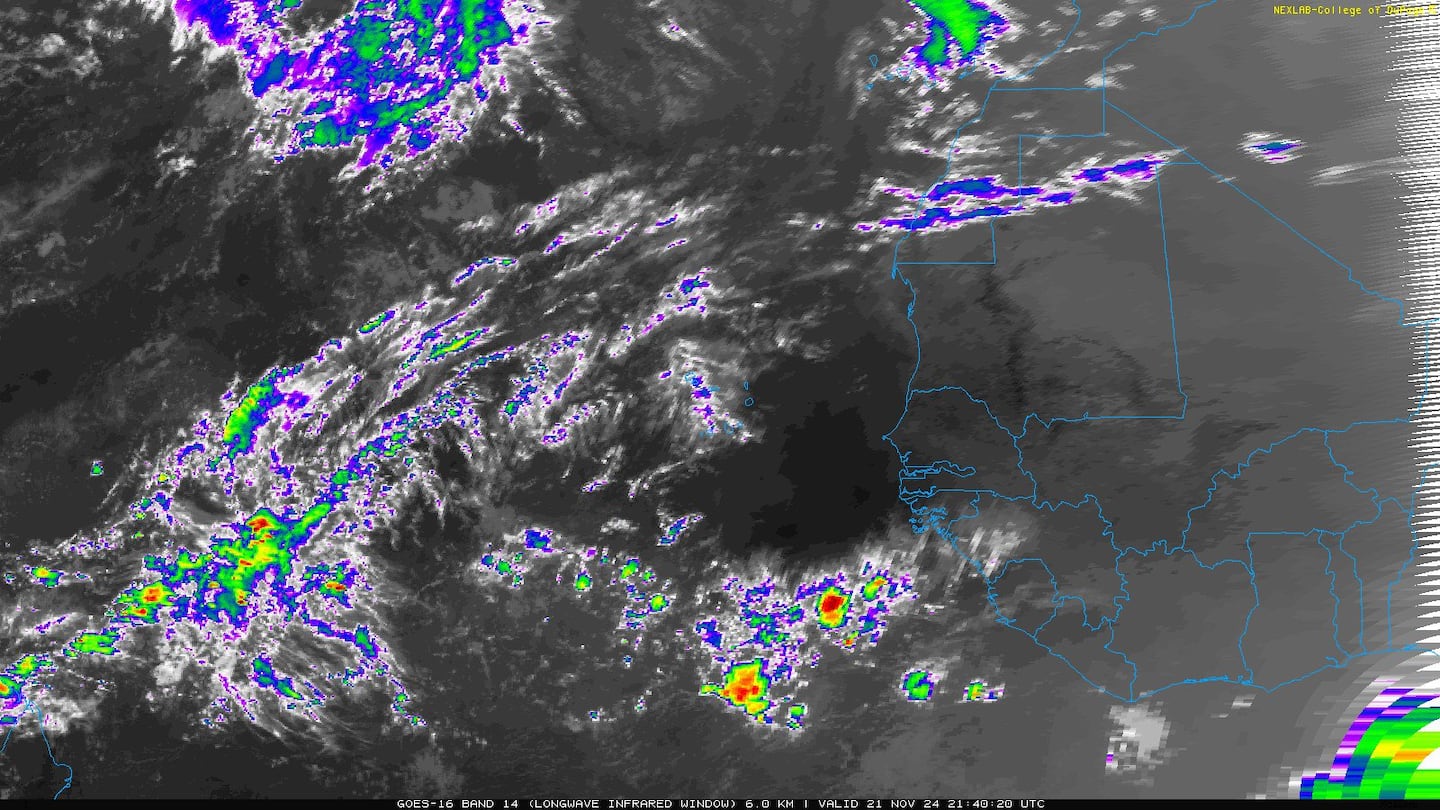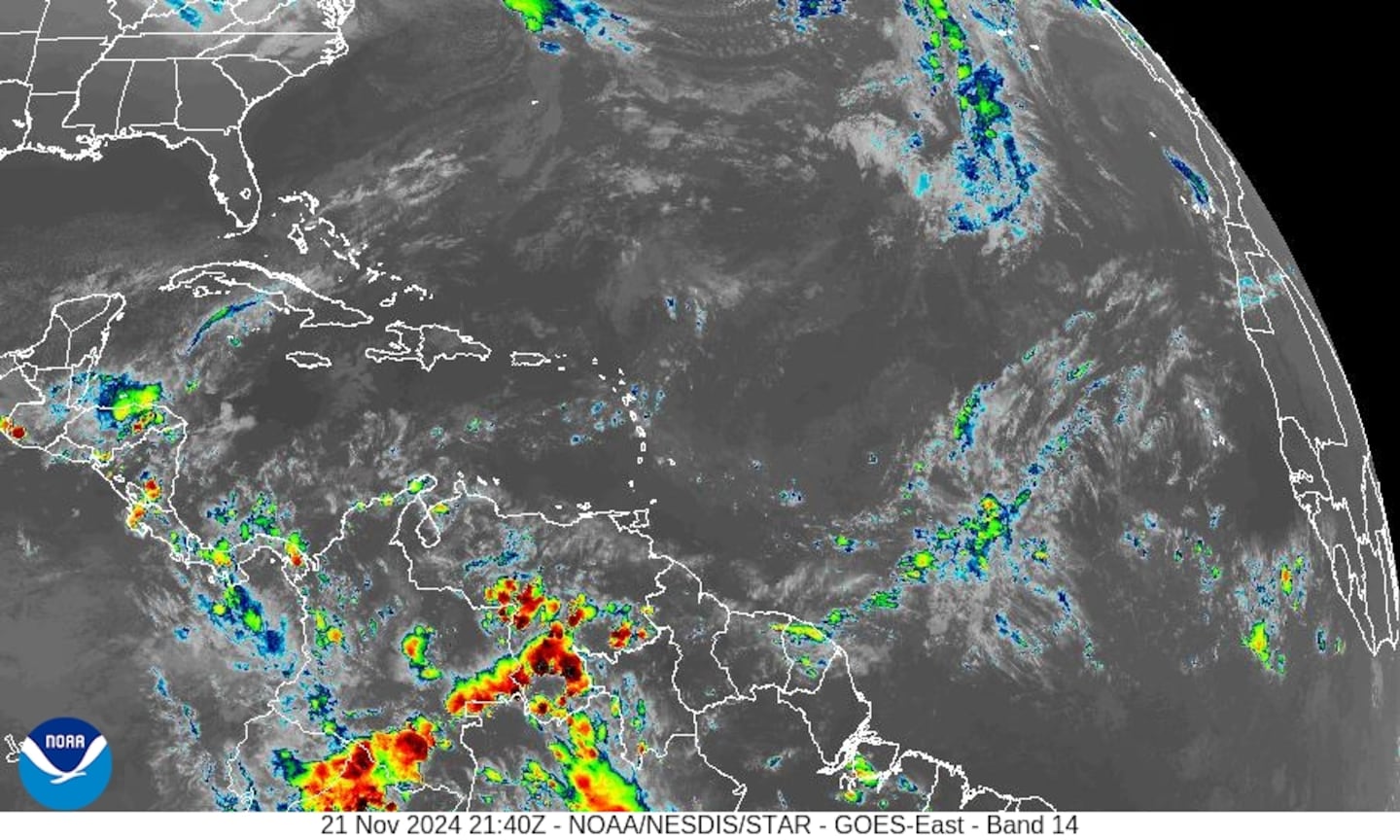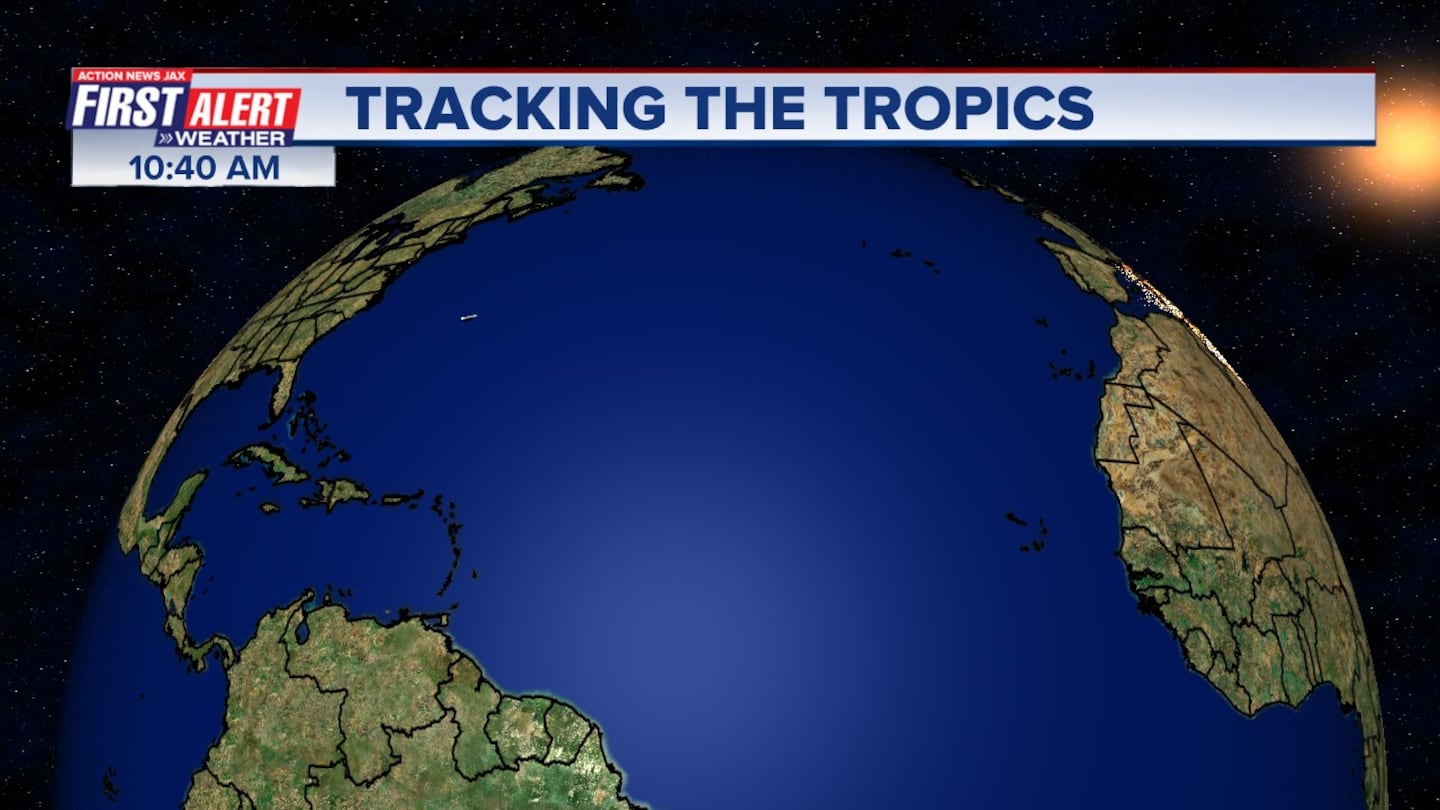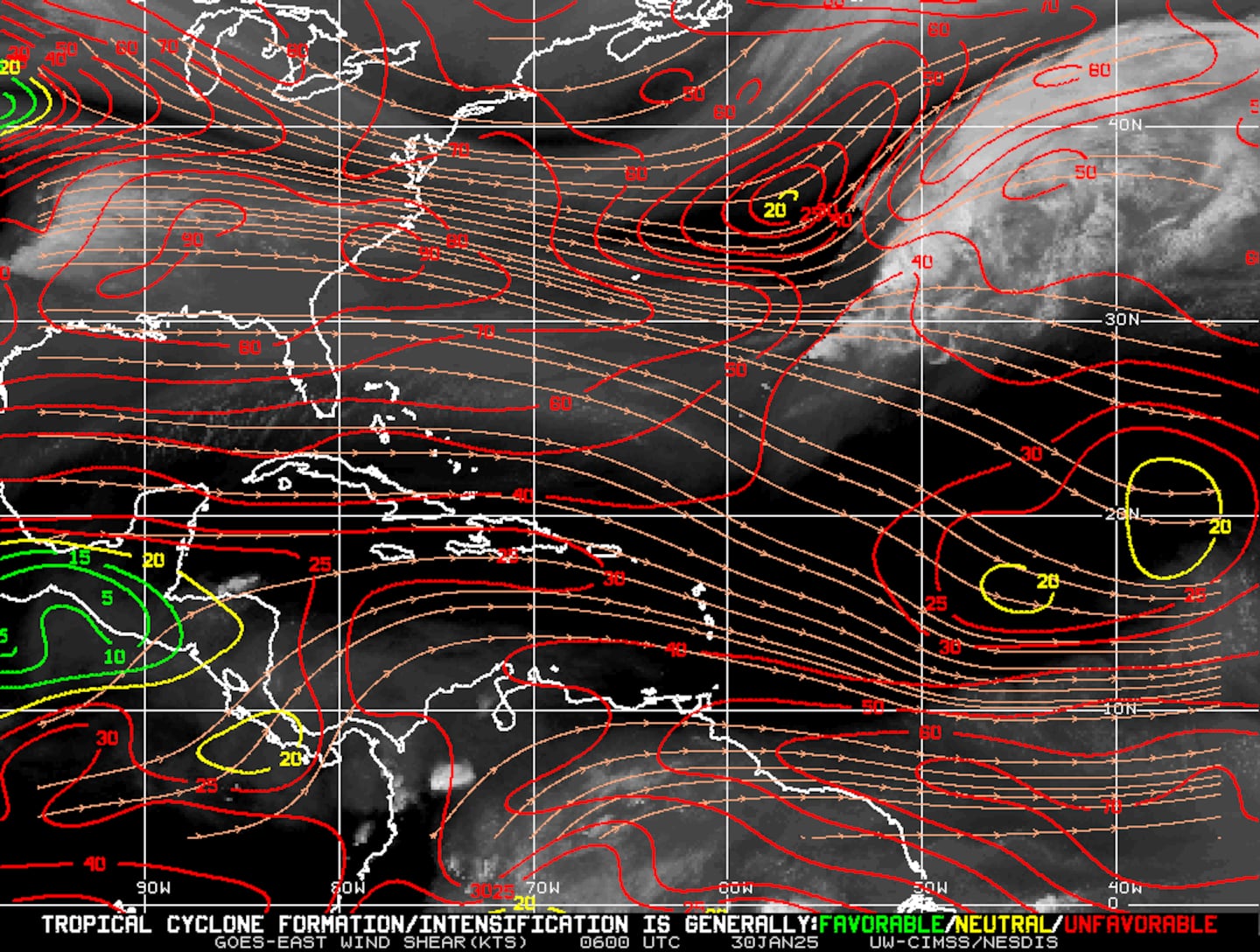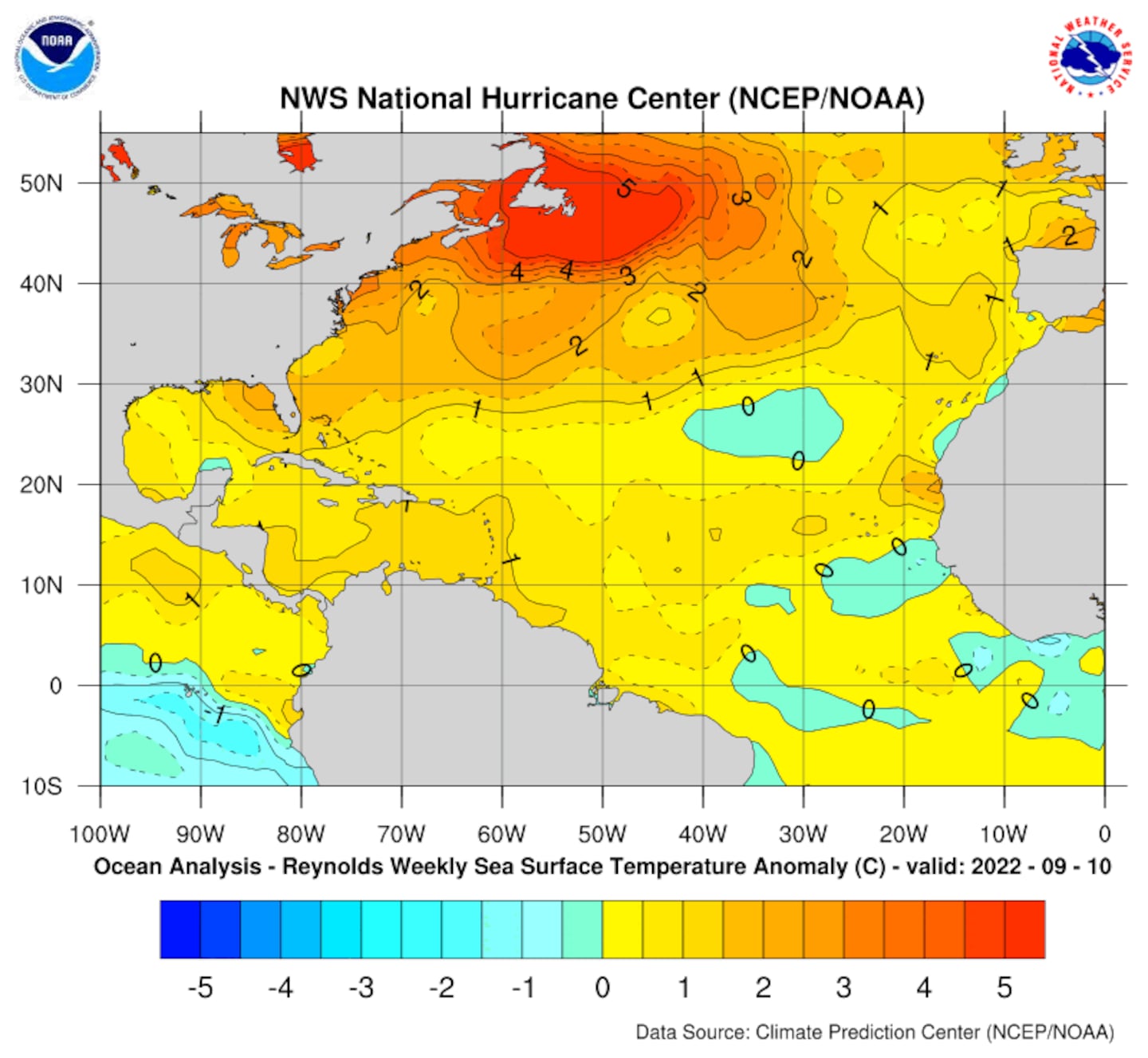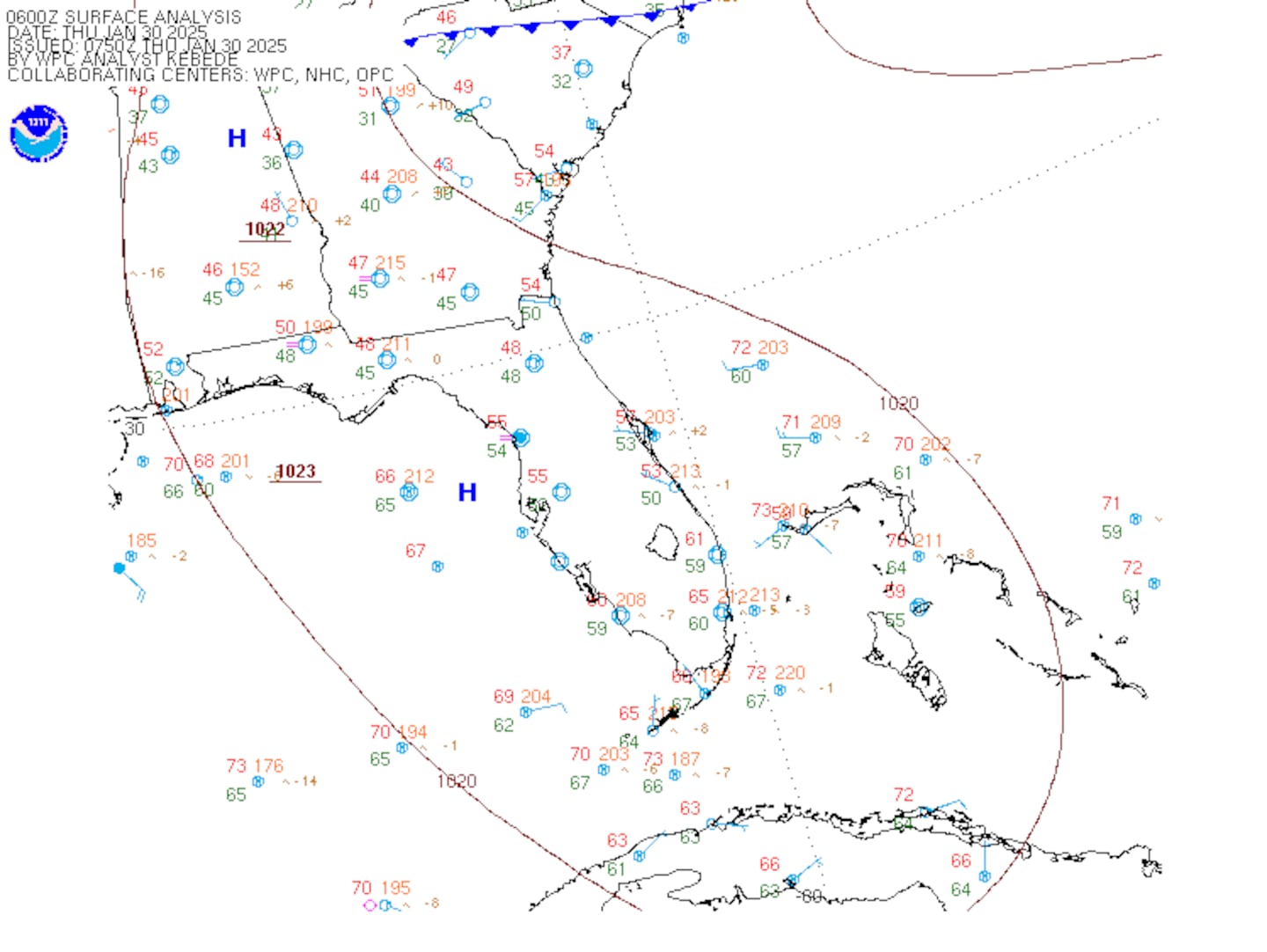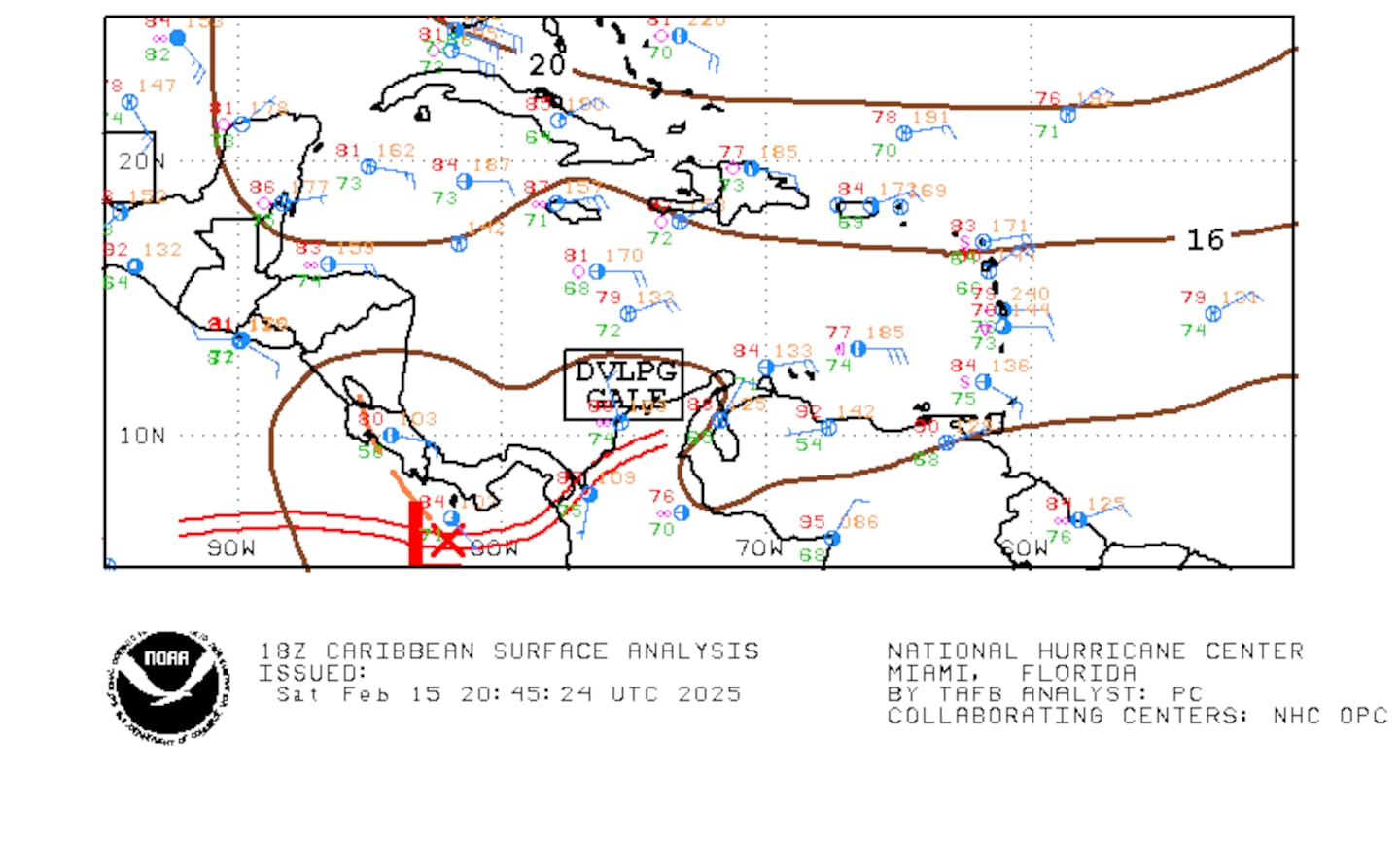Aug. 31, 2019 — The "Buresh Bottom Line": Always be prepared!.....First Alert Hurricane Survival Guide... City of Jacksonville Preparedness Guide... Georgia Hurricane Guide.
STAY INFORMED: Get the * FREE * First Alert Weather app
FREE NEWS UPDATES, ALERTS: Action News Jax app for Apple | For Android
WATCH "Surviving the Storm"
READ the First Alert Hurricane Center "Survival Guide"
DORIAN:
Forecast is trending east..... FOLKS! - don't get hung up on individual forecasts, model runs & bad info. Stay calm but with a logical dose of preparation & understand there WILL BE changes in the forecast in the days ahead. Do not focus too much on the exact center as impacts will occur far away from the eye. Hurricane preps are important & will help you before & especially during & after the storm. It's looking like more coastal impacts vs. inland - the magnitude of which will be very dependent on the exact location of Dorian in relation to the coast.
*** Everyone in the Bahamas & the Southeast U.S. should prepare for a slow moving & powerful hurricane next week. Coastal impacts but at least some inland impacts as well ***
There will still be some more adjustments to the track but POSSIBLE Jacksonville/NE Fl./SE Ga. impacts (primarily Tue. into especially the middle of next week) & very dependent on exact location, movement & intensity of Dorian:
* increasing & potentially deadly rip current risk at area beaches (through the weekend [despite no direct Dorian impacts yet] due to steady onshore flow). Always swim & surf with a "buddy" & as near a lifeguard as possible. Rips will become severe next week. Rip current explainer & safety info * here *.
* rough seas & surf... some coastal flooding (accentuated by new moon phase into the weekend in addition to occasional heavy rain) + above avg. tides at the coast, St. Johns River & its tributaries.
* breezy winds out of the east/southeast 10-20 mph, higher gusts through Monday.... peak wind gusts could reach 50+ mph next week depending on positioning & strength of Dorian.
* several periods of heavy showers & t'storms, but it's not looking like a "washout" for the weekend.. All this water including the higher than avg. tides & onshore flow could make for some serious flooding in some areas.
* isolated fast-moving tornadoes/waterspouts
Dorian went through a classic rapid intensification (RI) cycle from about mid afternoon Fri. into early Sat. as the central pressure dropped more than 40 mb & winds increased by some 60 mph. Tropical storm force winds extend about 105 miles from the center & hurricane force winds out to about 30 miles from the center as the wind field gradually expands. Dorian will continue to flourish in a favorable environment for as the forecast tracks slams the Northern Bahamas & then near Florida. The Bahamian Islands likely to suffer the most severe hit will be Grand Bahama including Freeport & Great Abaco while the Central & especially Southern Bahamas will fare far better. A very close call for Nassau, but the most severe part of Dorian looks to stay just north. We do need to be vigilant of a turn southwest for a while this weekend before resuming west then northwest while slowing.
As for movement.... Forecast models have started to key on a sharp turn to the north near Florida that COULD spare Florida a direct hit with the eye staying offshore. The models had the benefit - beginning Thu. evening - of ingesting analysis information of the hurricane hunter & research aircraft in addition to special balloon soundings across the SE U.S. While this usually superior data often helps in the long term with more accurate forecasts, I've noticed it often takes about 24 hours to become consistent. There's often a bit of an "over reaction" by the models initially. Well.... we're past that first 24 hours so hopefully the models are locking in. One element that still concerns me is that virtually all the models are not intializing Dorian strongly enough.
In any case.... The positioning AND western edge of a significant upper level ridge of high pressure - Bermuda high - across the Central Atlantic continues to be a key factor in the future movement. The upper level high is acting like a brick wall stopping the northward movement & turning Dorian westward. The European model has become consistent with a strong Dorian now just off the Florida coast Tuesday-Wed. The GFS model has joined many of the forecast models in showing a more west/northwest then north movement across the SW Atlantic & Bahamas then near or into Florida (depends on the model run) by early Tuesday but generally as weaker - though still significant - tropical cyclone. The UKMET model has been showing a similar trend as the European (but did not do particularly well w/ "Erin" - too strong, too far west) but has been lacking consistency, especially on intensity. In fact, the darn thing has been all over the map on Dorian. It's not wise to jump on a single model run or even a single model. And there will continue to be changes & updates. And it's worth noting the ensemble model members still do not necessarily take Florida out of landfall. The conditions over the SW Atlantic & near the Bahamas do appear quite - if not very - favorable for strengthening but future eyewall replacement cycles & some upwelling eventually as Dorian slows will cause at least periods of some weakening.
An exiting trough over the Northwest Atlantic the past few days (helped to steer Erin N/NE) was not strong enough to pick up Dorian. Instead, high pressure is building in place of & south of the exiting trough turning Dorian back more to the west & northwest & possibly even a little southwest (during peak of intense phase & while making the turn) upon approach to the Bahamas then while nearing the Florida & the S.E. U.S. coast. In the long term, Dorian's intensity will be modulated by structural changes & nuances including likely eyewall replacement cycles. Once west of the Bahamas & near Florida, Dorian should be off its peak intensity & feeling the effects of friction from land + possibly some upwelling (cooling) of the ocean below the hurricane.
So.... the bottom line is stay up to date on the latest forecasts for the Bahamas, Fl. & Southeast U.S. The Northern Bahamas are going to suffer a severe hit from Dorian while Florida will be faced with at least a menacing hurricane close to the coast as the inland Fl. threat seems to be decreasing.... while the threat to the Carolina's has increased. There will be changes in the forecast & impacts in the days ahead! Don't be so foolish as to look at a forecast one day & not return for an update whether it's 1, 3 or 5+ days later. Thank you. :)
The chart below is at 500 mb (~30,000 feet) & shows that ever so critical Bermuda high - its positioning & strength. Hurricanes follow the path of least resistance. That part really is rather simple. The difficult part is determining that path much beyond a few days.... especially right now with the way our weather pattern is set up (sometimes it's more straight forward).
Spaghetti model plots (remarkable shift east in 24 hours!) for Dorian:
Ensemble (An ensemble weather forecast is a set of forecasts that present the range of future weather possibilities) spaghetti plots: (for an in-depth look on ensemble modeling see * this * [Blake/Brennan, NHC])
The busy map below (courtesy CIMSS & the next 2 charts are from a couple days ago BUT still help explain the story) helps explains some of what's going on & what's ahead for Dorian. The lines are shear vectors. Brighter lines - yellow & red - stronger shear & the enemy of tropical cyclones. The upper level trough is just west of Dorian helping to nudge Dorian more northwest vs. west. This feature is dropping W/SW (& may help with some tropical development over the Gulf). When combined with building Bermuda high to the north, Dorian "straightens out"... moves more west.
The solid colors are sea surface temps. show plenty of warm water along Dorian's projected path - 80s & even around 90 degrees near the Bahamas.
But it's not just the sea surface temps. when it comes to the intensity of Dorian, it's also - arguably more importantly - the depth of the available warm water - deep oceanic heat content. Image below shows there's plenty of such energy ready to "feed" Dorian, especially closer to the Bahamas & coastal Fl. (partly the Gulf Stream).
And remember what that "cone of concern or uncertainty" means & does not mean. That cone has everything with the historic track error ranging from the moment the forecast was issued all the way out to 5 days when the avg. error is nearly 200 miles!
National Hurricane Center average track error starting with 12 hours & ending at the 120 hour forecast from 2014-'18:
IR satellite:
Integrated Microwave imager courtesy CIMSS: ("beautiful" & detailed evolution of Dorian)
What to do now in addition to making sure ready for possible power outages & some tree trimming:
Dr. Phil Klotzbach - September landfalling hurricanes:
AND a couple of strong waves over the E. Atlantic have at least some potential for gradual development....
An examination of dust over the Central & Eastern Atlantic shows a continuation of a good deal of dust over the Central & Eastern Atlantic as well as parts of the Caribbean. Dorian is now clearly free of the dust plumes.
2019 names..... "Fernand" is next on the Atlantic list (names are picked at random... repeat every 6 years... historic storms are retired (Florence & Michael last year):
East Atlantic:
Mid & upper level wind shear (enemy of tropical cyclones) analysis (CIMMS). The red lines indicate strong shear of which there is plenty across the Atlantic at the moment:
The Atlantic Basin:
Water vapor imagery (dark blue indicates dry air):
Deep oceanic heat content:
Sea surface temp. anomalies show a warm Gulf of Mexico, Central & Northwest Atlantic while the "Main Development Region" (MDR) remain cooler than avg. along with parts of the Central Caribbean.....
SE U.S. surface map:
Surface analysis centered on the tropical Atlantic:
Surface analysis of the Gulf:
Caribbean:
Cox Media Group






